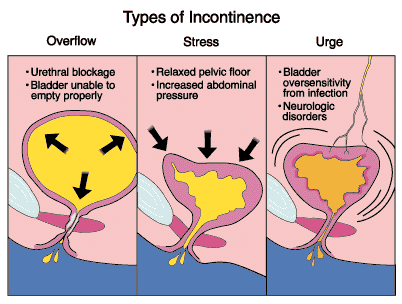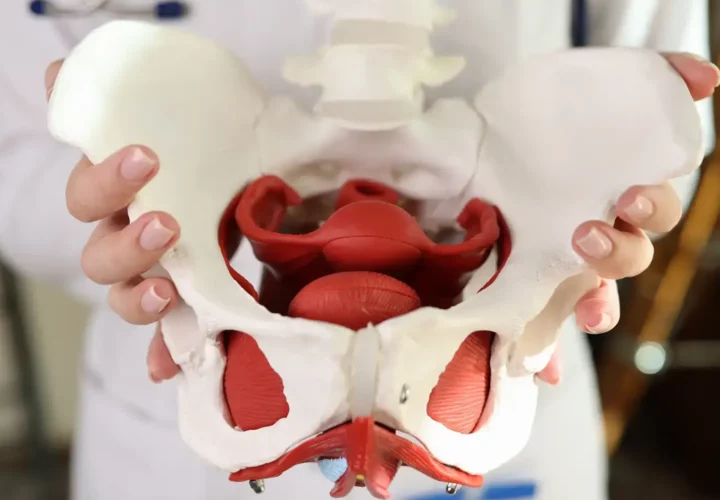Incontinence describes an accidental loss or involuntary loss of bodily fluids. This is a condition that is very widespread and ranges in all ages. Incontinence can be anything from a small leak to a complete loss of bladder or bowel control. There are many ways to be at risk for incontinence. Some causes include childbirth and pregnancy. Others include smoking and being overweight, which many people do not realize. There are multiple types of incontinence as well.
One type of incontinence is stress incontinence. This type occurs during coughing, sneezing, laughing, lifting heavy objects, or making movements that put stress or pressure on the bladder. This happens because of weak pelvic muscles and/or weakening of the wall between the bladder and vagina. Weakness can occur from being pregnant, giving birth, or low levels of estrogen during menstrual periods or after menopause. Another type is urge incontinence. This occurs after feeling a sudden urge to urinate with the inability to control the bladder. Urge incontinence can happen while sleeping, drinking water, or by listening to water run.
 A third type is overflow incontinence. This is when the bladder is constantly full and reaches a point where it overflows and leaks urine. This happens because the urethra is blocked due to causes such as kidney stones, tumors, or enlarged prostate glands. Also, overflow incontinence could occur because of nerve damage from diabetes or other diseases that weaken the bladder muscles. Lastly, functional incontinence. This is when a physical disability, an external obstacle, or a problem in communicating or thinking prevents someone from getting to the bathroom on time.
A third type is overflow incontinence. This is when the bladder is constantly full and reaches a point where it overflows and leaks urine. This happens because the urethra is blocked due to causes such as kidney stones, tumors, or enlarged prostate glands. Also, overflow incontinence could occur because of nerve damage from diabetes or other diseases that weaken the bladder muscles. Lastly, functional incontinence. This is when a physical disability, an external obstacle, or a problem in communicating or thinking prevents someone from getting to the bathroom on time.
About 25 to 45 percent of women in the United States experience incontinence. These women range from all ages and races but women who are active tend to see it more. Many theories believe active women see it more because it becomes “uncovered”. This is because running and jumping activities can increase abdominal pressure which makes the pelvic floor muscles tired, leading to muscle weakness. In return, this leads to bodily fluids leaking. Another thing that plays an important role in incontinence is fluid intake. It has been seen many times that a woman will decreases her water intake but will actually leak fluid. Improving bladder control is important and increasing water intake throughout the day is helpful in doing that.
During a 2016 study, it was found that women who participated in physical therapy for three months had a 75% decrease in leaking bodily fluids. Participating in physical therapy can help you take control of your situation. A physical therapist can assess and teach you exercises that strengthen your pelvic muscles and help with neuromuscular control. These exercises will also help with breathing, abdominals, and glutes. Common exercises used are pelvic tilts, clamshells, bridges, and Kegels. Because this one on one therapy works so well; surgery, medical device implants, and medicines are typically no longer options.



